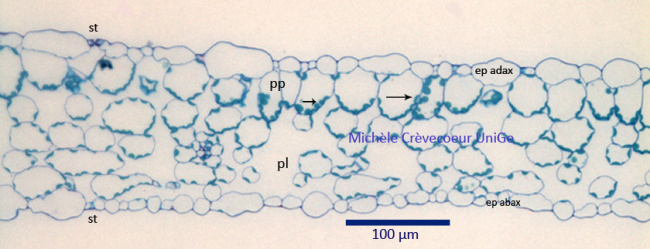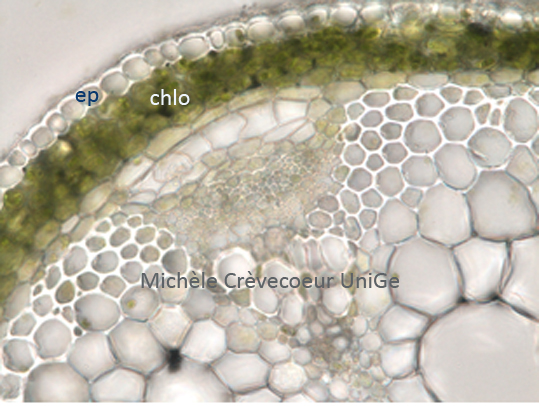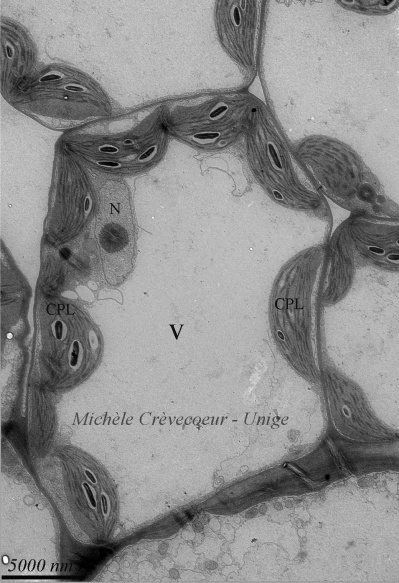Photosynthetic parenchyma or chlorenchyma
This parenchyma has an essential role in photosynthesis thanks to the chloroplasts of their cells. It is illustrated on this page by light and electron micrographs.
First example: Epon cross section (1 μm) through a young Arabidopsis th leaf stained with toluidine blue. The mesophyll is characterized by a layer of palisade parenchyma below the adaxial epidermis and a few layers of spongy parenchyma. Chloroplasts are stained in blue and are disposed around the central vacuole (small blue arrows).
ep adax: epidermis of the adaxial face; ep abax: epidermis of the ab axial face; st: stomates: pp: palisade parenchyma; pl: spongy (lacunar) parenchyma.

Second example: part of a cross section made with a razor blade in a young stem of Arabidopsis thaliana and imaged directly, without staining. The chlorenchyma (chlo) appears as green layers below epidermis.

Third example: electron micrographs showing cells of photosynthetic parenchyma in Arabidopsis th. Chloroplasts (CPL) are distributed around the large central vacuole (V). They may contain starch grains that appear as electron dense globules as seen in the left micrograph.

